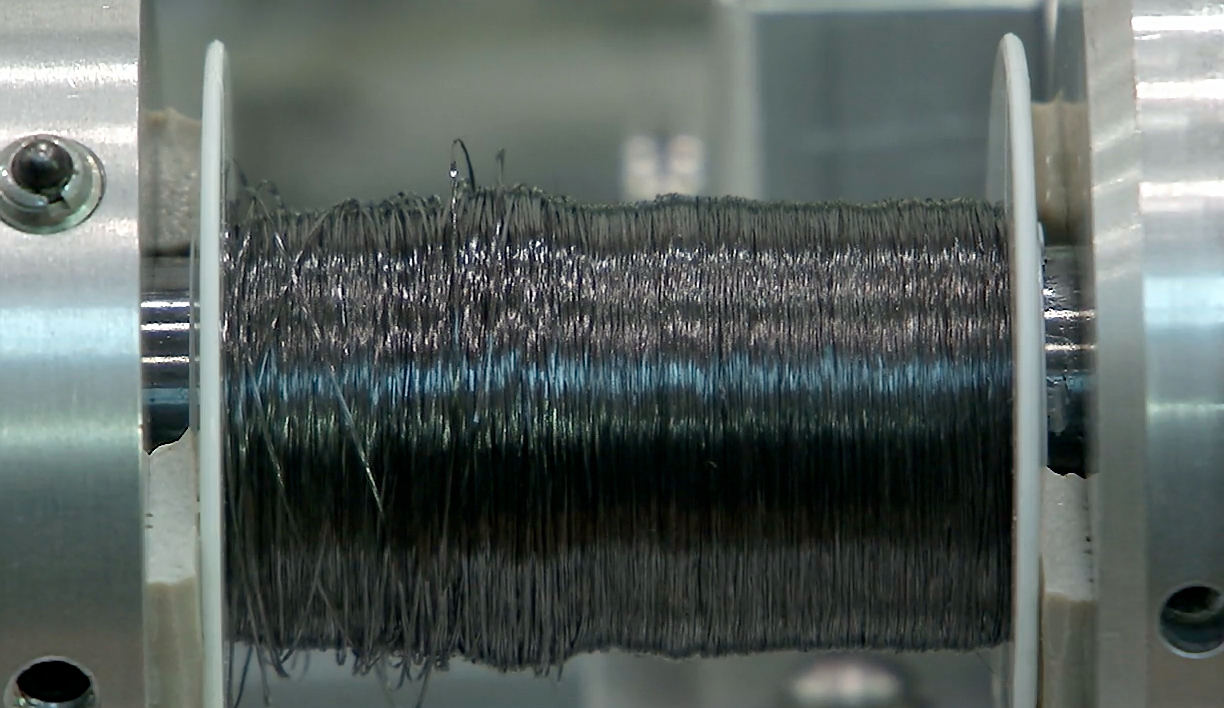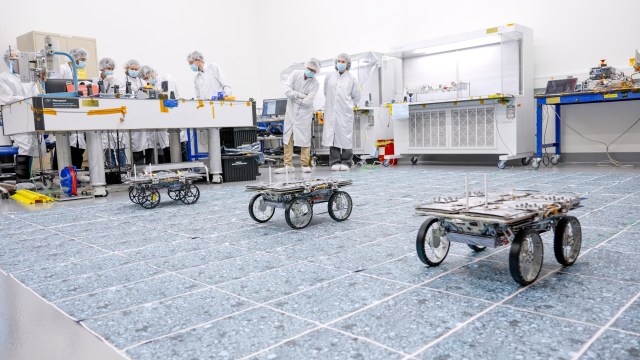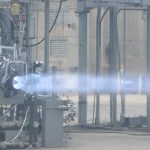Superlightweight Aerospace Composites
The SAC project advances the maturation of Carbon Nanotube (CNT) reinforced composites to enable their application in aerospace structures. State-of-the-art lightweight structures are constructed from aluminum, titanium, or carbon fiber reinforced polymer composites. Long-term goals include significant mass savings of space structures including CNT composite tanks suitable for nuclear-thermal-propulsion cryogenic storage of hydrogen.
Lead Center
Langley Research Center
Introduced
October 2018
PRINCIPAL TECHNOLOGIST
Mark Hilburger
Project Manager
Emilie Siochi
SAC
Superlightweight Aerospace Composites
Constructed from aluminum, titanium, or carbon fiber reinforced polymer composites (CFRP), SAC aims to contribute significant mass savings in space structures to CNT composite components suitable for Nuclear Thermal Propulsion (NTP) and Lunar/Mars space vehicle structural elements.
Carbon Nanotubes create high-strength, lightweight carbon yarn strong enough to be used in place of a variety of other materials that make up space structures.
NASA is developing an extremely lightweight material that could replace metals and carbon fiber composites currently used for a range of aerospace structures, such as fuel tanks, habitats and trusses, to enable significant mass savings.
Current lightweight space structures are constructed from aluminum, titanium or carbon fiber reinforced polymer composites. The Super lightweight Aerospace Composites (SAC) project is scaling up the production of a high-strength, lightweight carbon nanotube yarn strong enough to be used in place of a variety of metallic and other, heavier, materials that make up space structures.
Carbon nanotubes consist of carbon atoms chemically bound in the shape of cylinders that are less than 1/80,000 the diameter of human hair. At that scale, carbon nanotubes are about 100 times stronger than steel and about eight times lighter. Engineers estimate the high-strength yarn could result in a 25 percent mass savings when replacing carbon fiber reinforced polymers and up to a 50 percent mass savings when replacing aluminum.
The SAC project, based out of NASA’s Langley Research Center, in Hampton, Virginia, aims to enable significant mass savings on space structures. One example is composite propellant tanks for nuclear thermal propulsion systems. The SAC team is working on the capability to produce high-volume amounts of high-strength yarn.
The project is on track to produce composite coupons from the material to validate the project’s manufacturing approach and enable the high-strength yarn to be considered for a variety of applications for future NASA and commercial missions.
Partnership:
Nanocomp Technologies Inc. of Merrimack, New Hampshire, is working to scale up manufacturing and lower production costs of the material.






































